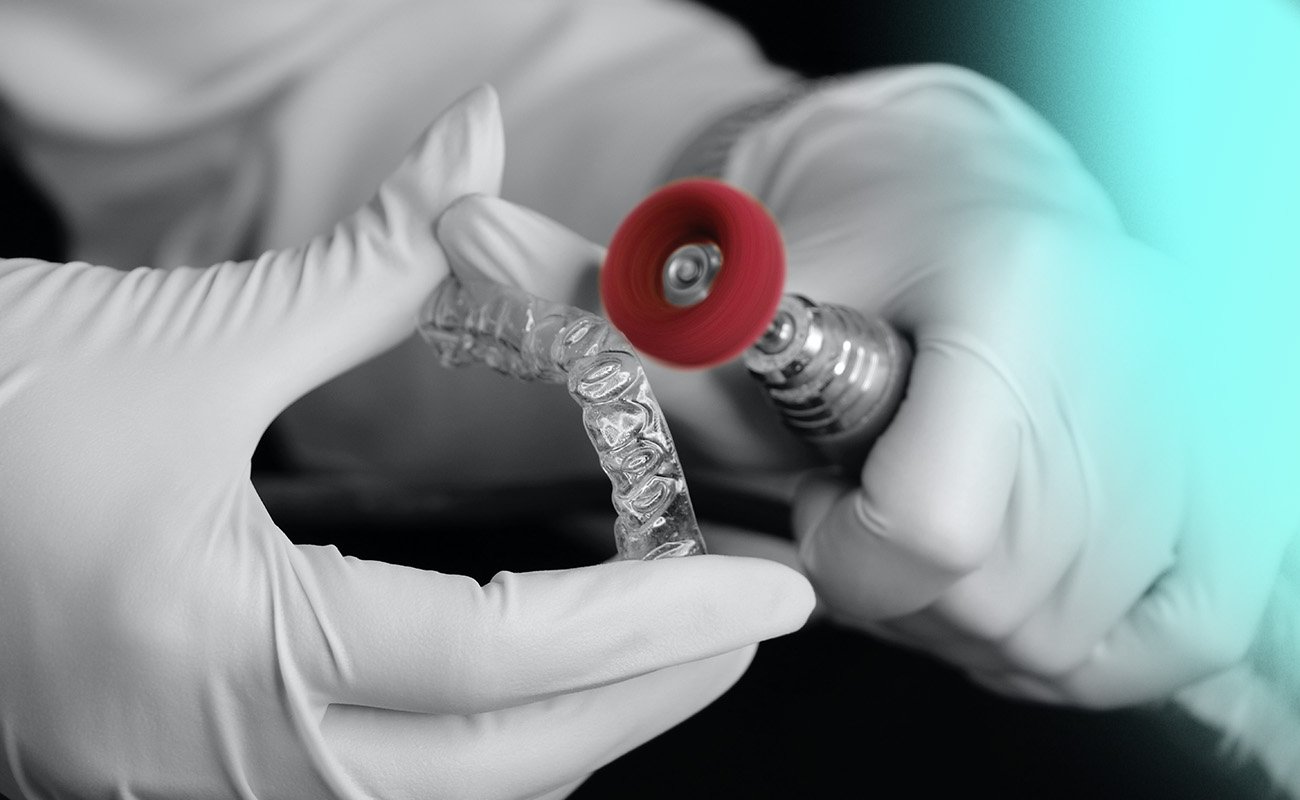Ready to straighten your teeth but want an inconspicuous approach that won’t interfere with your busy, social life? As a more discreet alternative to daytime clear aligner therapy, a growing number of companies now offer night aligners—removable plastic teeth straighteners worn while you sleep. But do they work as effectively as traditional day aligners? Are there drawbacks to only wearing orthodontic devices at night? And with trusted names like Byte entering the nighttime clear aligner market, how do you choose the best provider for your needs?
In this article, we explore the pros and cons of popular nighttime clear aligners so you can determine if this more subtle teeth straightening method is right for you. We’ll review how night aligners differ from traditional clear aligners, and compare treatment times, results, and costs to help inform your decision. If you’re seeking straighter teeth on your own schedule and budget, read on to discover if comfortable, convenient nighttime aligners can discreetly deliver the smile you want while you rest.
Night Time Aligners Versus All Day: Main Differences
Night aligners and all-day aligners both utilize a series of custom-fit clear plastic trays to incrementally shift your teeth into better position over time. However, as their names suggest, the main difference lies in how long you wear them daily. Traditional all-day aligners are inserted in the morning and worn for 20-22 hours per day, only removing them briefly for eating, drinking, and oral care. This constant pressure enables faster results, straightening teeth more rapidly – most all-day aligner therapy can take as little as 4 to 6 months.
Night aligners, on the other hand, are worn for just 8-10 hours—you insert them after dinner and wear them overnight while sleeping. Spending less time per day pushing your teeth means night aligners work more gradually, requiring longer treatment ranging from 8-10 months. Moreover, night aligners are suitable for correcting minor malocclusions, while day aligners can correct slightly more severe conditions.
See our Night vs All-Day Aligners Comparison.
Worth Knowing
The study published on PubMed Central reveals that a significant number of adults favor discreet orthodontic solutions like aligners or lingual braces.
Pros of Wearing Aligners at Night Only
Like any orthodontic method, night aligners have both advantages and disadvantages to weigh when considering them. Looking at the key benefits and drawbacks can help determine if this subtle approach is right for your smile goals.
Nobody Can See or Know
An advantage of night-time clear aligners is the privacy they provide. Since they are worn primarily during sleep, they offer a discreet solution for straightening teeth without drawing attention during the day. This aspect can appeal to individuals who prefer to keep their orthodontic treatment confidential or who may feel self-conscious about wearing aligners in public.
No Need to Worry About Eating and Drinking
One of the best benefits of overnight teeth aligners is that you don’t have to worry about what you eat or drink. Unlike traditional clear aligners worn throughout the day, night-time aligners eliminate the inconvenience of having to remove them for meals and snacks, allowing for a more seamless integration into daily routines.
Doesn’t Require Orthodontist Visits
Nighttime aligners are a great option for those with busy schedules who want to achieve straighter teeth. Traditional orthodontic treatments, such as braces, require frequent orthodontist visits for adjustments, which can be time-consuming and disruptive to daily life. However, with nighttime aligners, patients can avoid these regular visits altogether, streamlining the treatment process and allowing for greater flexibility in managing busy schedules.
No Need to Change Your Daily Routine
Another major benefit that makes night aligners an appealing choice is that they allow you to keep your regular daily routine intact. Unlike traditional aligners that require constant wear throughout the day, night-time aligners are worn exclusively during sleep, leaving your waking hours unaffected. This means you can wake up and start your mornings just as you always have, without the need to insert aligners before breakfast or brushing your teeth. Throughout the day, you can eat and drink without interruption, as there’s no need to constantly remove aligners to prevent damage or stains.
Whether you’re at work, socializing, or attending important meetings, you can go about your day without the constraints of tight-fitting aligners that may initially affect speech. Night-time aligners offer the freedom to enjoy meals out, dates, or professional engagements without having to excuse yourself for aligner care.
Cons of Wearing Night Time Aligners
For Minor Misalignments Only
One drawback of night-time clear aligners is that they may be suitable only for minor misalignments. While they can effectively address mild orthodontic issues, such as slight crowding or minor spacing, they may not be sufficient for more complex cases requiring extensive tooth movement or bite adjustments.
People with more severe misalignments or significant dental issues may find that night-time aligners are not capable of providing the level of correction needed to achieve their desired results. In such cases, alternative orthodontic treatments, such as traditional braces or clear aligners worn throughout the day, maybe recommended.
See our article: Snaggle Tooth Before and After.
Longer Treatment
Another disadvantage of night-time clear aligners is the potential for longer treatment duration compared to traditional aligners worn throughout the day. Because night-time aligners are only worn while sleeping, they apply less consistent pressure on the teeth, which may result in slower progress and extended treatment timelines.
More Uncomfortable
Nighttime invisible aligners are typically thicker than daytime versions as they require extra force to guide teeth into proper alignment. This additional bulkiness may cause irritation in the mouth, resulting in rubbing and soreness along the inside of the cheeks and lips.
This discomfort can be particularly pronounced during the first few days of wearing a new set of aligners. Patients may experience some tenderness and soreness as their mouth adjusts to the new aligner, but this should improve with time.
See our article: Can I Wear my Aligners at Night Only?
Worth Knowing
A survey in the Journal of Orofacial Orthopedics reports that 83% of patients adapted to their aligners within the first week.
Which Providers Offer Night Aligners?
With the increasing interest in subtle teeth aligners worn overnight, more orthodontic companies are now offering nighttime clear aligner therapy options. But which brands should you consider for affordable, comfortable, and effective nighttime smile correction?
Byte At-Night
Byte-at-Night is an orthodontic solution tailored for nighttime use, made from medical-grade materials and designed to be worn for 10 hours during sleep. This product leverages Byte’s HyperByte technology to shorten treatment times and ease discomfort.
While the standard Byte aligners require 22 hours of daily wear and typically conclude treatment in 3 to 4 months, the Byte-at-Night version extends the treatment period to 5 to 6 months due to the reduced wearing time.
Aligners for both day and night versions need weekly replacement. The Byte-at-Night aligners, however, are priced higher at $2,399 for a one-time payment, which is about $400 more than the daytime aligners, with correspondingly higher monthly payments as well. Both options include the HyperByte device and an end-of-treatment retainer.
See our review of Byte.

Byte
An affordable option with refundable impression kits, free HyperByte, and a Byte for Life guarantee.
Check out Byte AlignersAlignerCo
AlignerCo’s NightOnly Clear Aligners offer a flexible and less intrusive option for those looking to straighten their teeth without impacting their daily activities. Designed for wear during the night for over 10 hours, these aligners allow users to maintain their regular daytime routines without the hassle of removing the aligners for meals or activities, simplifying oral hygiene and overall compliance.
Priced at $945, the night aligners are approximately $200 more expensive than AlignerCo’s all-day version. However, this cost includes a free retainer and a teeth whitening kit, adding value to the investment.
The treatment duration with NightOnly Clear Aligners ranges from 6 to 8 months, which is a bit longer than the 4 to 6 months typically required for the daytime aligners. While AlignerCo’s nighttime option is more affordable compared to similar products from other brands, it remains a pricier and slightly longer alternative within AlignerCo’s lineup.
See our review of AlignerCo.

AlignerCo
The cheapest at-home aligners, with monthly plans, no down payment, and considerable discounts.
Check out AlignerCo AlignersNewSmile
NewSmile’s nighttime aligners are another convenient alternative for those seeking orthodontic treatment without daytime interference, with an average treatment duration of 8 to 10 months. This is notably longer than the 4 to 6 months typically required for their all-day aligners. While the cost of the nighttime aligners is slightly higher than the daytime version, the price difference is minimal. Each aligner package, regardless of whether it’s for day or night use, includes free retainers, a whitening kit, and free shipping.
See our review of NewSmile.

NewSmile
Affordable at-home treatment with positive reviews offering superior look and comfort.
Check out NewSmile AlignersAre Nighttime Aligners Effective?
Nighttime aligners are a good treatment option for those who have major concerns over the aesthetic appearance of wearing braces or other straightening treatment appliances. If you are not ready to wear any visible teeth straightening products during the day, nighttime aligners offer a suitable solution against all other types of treatment like all-day aligners or braces.
However, it is important to note that nighttime aligners are most effective for minor cases such as small gaps between the front teeth. They may not provide the desired results for moderate to severe dental cases. In such instances, all-day clear aligners should be used instead, as they apply more gentle and consistent pressure for a longer duration of time. Overall, choosing the most appropriate aligner type depends on the specific needs and goals of each patient.
Frequently Asked Questions
Do Night Aligners Cost More than Standard Ones?
With most brands, a night aligner is a slightly more expensive option, but they both offer the same added value such as a free retainer, teeth whitening kit, and free delivery.
How Long Does the Night Time Aligners Treatment Last?
The treatment time of nighttime aligners varies depending on the brand used. As an average night-time aligner treatment takes around 8 to 10 months compared to day-time aligners which take an average of 4 to 6 months.
Can I Switch from Daytime to Nighttime Aligners During the Treatment?
If you are recommended to wear aligners for 22 hours per day it is not advisable to opt for or switch to a nighttime version only. Night-time aligners only treat very mild teeth conditions.
Can I Wear Nighttime Aligners During the Day?
Nighttime aligners are made of a more premium material that is thicker and designed solely for use overnight. It is not advised to wear these during the day as you can not only damage the aligner but also make the issue with your teeth worse.
Are Nighttime Aligners Safe?
Most nighttime aligner brand products are FDA-approved and the materials used are safe to use in your mouth. It is not possible to accidentally swallow any aligner.
Sources
Alansari, R. A., Faydhi, D. A., Ashour, B. S., Alsaggaf, D. H., Shuman, M. T., Ghoneim, S. H., Linjawi, A. I., Marghalani, H. YA., Dause, R. R>, Adult Perceptions of Different Orthodontic Appliances, Patient Prefer Adherence. 2019; DOI: 10.2147/PPA.S234449. Available online at: https://www.ncbi.nlm.nih.gov/pmc/articles/PMC6916694/
Wexler, A., Nagappan, A., Beswerchij, A., Choi, R., Direct-to-consumer orthodontics: surveying the user experience, J Am Dent Assoc. 2020. DOI: 10.1016/j.adaj.2020.02.025. Available online at: https://pubmed.ncbi.nlm.nih.gov/32718492/
Nedwed, V., Miethke, R. R., Motivation, acceptance and problems of invisalign patients, J Orofac Orthop., 2005; DOI: 10.1007/s00056-005-0429-0. Available online at: https://pubmed.ncbi.nlm.nih.gov/15827703/

